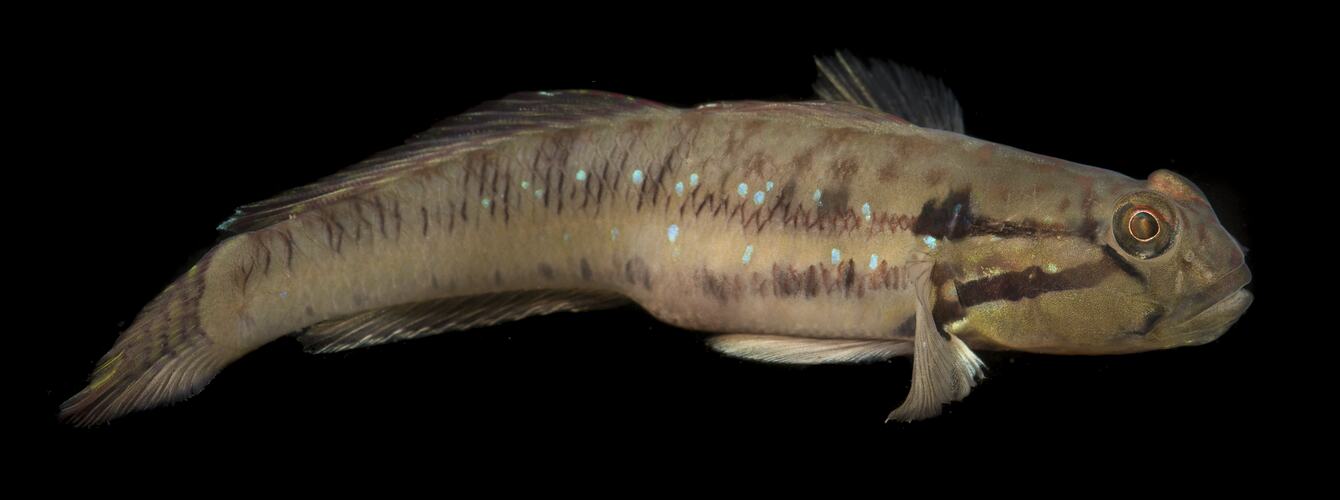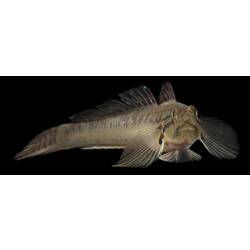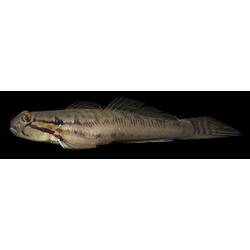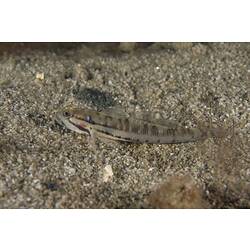General Description
A medium-sized goby with two diagonal dark bands originating on the head. The upper band crosses the gill cover and runs along the side usually to below the first dorsal fin. The lower band runs from below the eye, through the pectoral fin base and along the lower sides, breaking up into purplish-brown spots above the anal fin. Males have a long tail. Body up to 18 cm.
Biology
Pairs of Bridled Gobies live in burrows on sandy, silty or muddy bottoms in the upper reaches of bays and estuaries. This is one of the larger and more colourful gobies in southern waters.
Distribution
Eastern, southern and western Australia, including Tasmania.
Habitat
Upper reaches of bays and estuaries, and in the lower freshwater parts of streams.
More Information
-
Animal Type
-
Animal SubType
-
Brief Id
A grey-brown fish with dark bands running back from below the eye.
-
Colours
Grey, Greenish-brown
-
Maximum Size
18 cm
-
Habitats
-
Where To Look
-
When Active
Diurnal
-
Diet
Invertebrates
-
Diet Categories
Marine Invertebrates
-
Endemicity
-
Commercial
No
-
Depths
Shore (0-1 m), Shallow (1-30 m)
-
Water Column Locations
On or near seafloor
-
Taxon Name
-
Scientific Author
(Kner, 1865)
-
Common Name
Bridled Goby
-
Kingdom
-
Phylum
-
Subphylum
-
Superclass
-
Class
-
Order
-
Family
-
Genus
-
Species Name
bifrenatus






